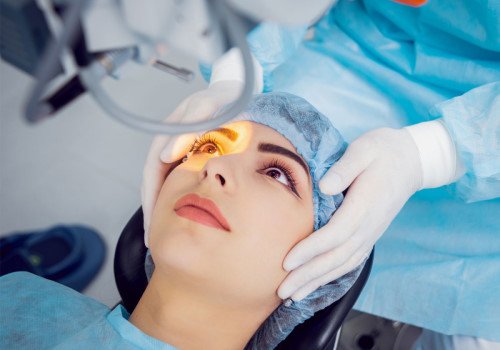
Restore Clear Vision with Cataract Treatment
Cataract
Cataract (मोतियाबिंद) causes clouding of the eye’s natural lens, leading to blurred or dim vision. It usually progresses slowly and can affect one or both eyes.
Symptoms: Blurry vision, trouble seeing at night, glare sensitivity, faded colors, halos around lights, frequent prescription changes.
Causes: Mostly age-related, but also linked to diabetes, UV exposure, smoking, alcohol, eye injuries, or past surgeries.
Treatment: Cataract surgery involves replacing the cloudy lens with an artificial intraocular lens (IOL). It's quick, safe, and highly effective.
Prevention: Wear UV-protective sunglasses, eat antioxidant-rich foods, manage diabetes/BP, avoid smoking, and get regular eye checkups (especially after 40). With early diagnosis and modern surgery, vision can be restored effectively—improving daily life and preventing further complications.


Premium Lens Options
Premium intraocular lenses (IOLs) are advanced artificial lenses implanted during cataract surgery, designed to improve vision and reduce dependence on glasses.
Types: Multifocal IOLs (for near and distance vision), Toric IOLs (for astigmatism correction), and Extended Depth of Focus (EDOF) lenses (for intermediate vision clarity).
Benefits: Enhanced visual outcomes, better contrast sensitivity, reduced need for spectacles, and improved quality of life.
Suitability: Ideal for patients wanting spectacle independence after cataract surgery; selected based on lifestyle and eye condition.
Considerations: Costlier than standard lenses, but they offer greater freedom and convenience.
Types of Cataract
Cataracts are classified based on their location and characteristics within the eye’s lens.
Nuclear Cataract:Develops in the central zone (nucleus) of the lens. It usually causes gradual yellowing or browning of vision and is commonly related to aging.
Cortical Cataract: Occurs in the lens cortex surrounding the nucleus. It often appears as white, wedge-shaped opacities that start at the lens edge and progress inward, causing glare and contrast issues.
Posterior Subcapsular Cataract: Forms at the back of the lens, beneath the capsule. It develops more rapidly and affects near vision and glare sensitivity, commonly seen in younger patients or those using steroids.
Congenital Cataract: Present at birth or early childhood, sometimes hereditary or caused by infections during pregnancy.
Other Types: Traumatic cataracts from eye injuries and secondary cataracts due to other diseases like diabetes or medications


Cataract Treatment
Cataract treatment mainly involves surgical removal of the cloudy natural lens, replaced by a clear artificial intraocular lens (IOL) to restore vision. Surgery is safe and effective, usually done on an outpatient basis with local anaesthesia.
Before surgery, vision may be temporarily managed with updated glasses or magnifying lenses. However, surgery is the only permanent solution once cataracts affect daily activities
Modern cataract surgery techniques include phacoemulsification, which uses ultrasound to break up the lens before removal, reducing recovery time. Premium IOL options can also correct astigmatism and presbyopia during surgery
After surgery, patients use antibiotic and anti-inflammatory eye drops to prevent infection and reduce inflammation. Regular follow-ups ensure proper healing.
Early diagnosis and timely surgery improve outcomes and prevent vision loss. Protecting eyes from UV exposure can delay cataract progression.
Frequently Asked Questions About Cataract Treatment
Everything you need to know about cataract surgery and recovery
